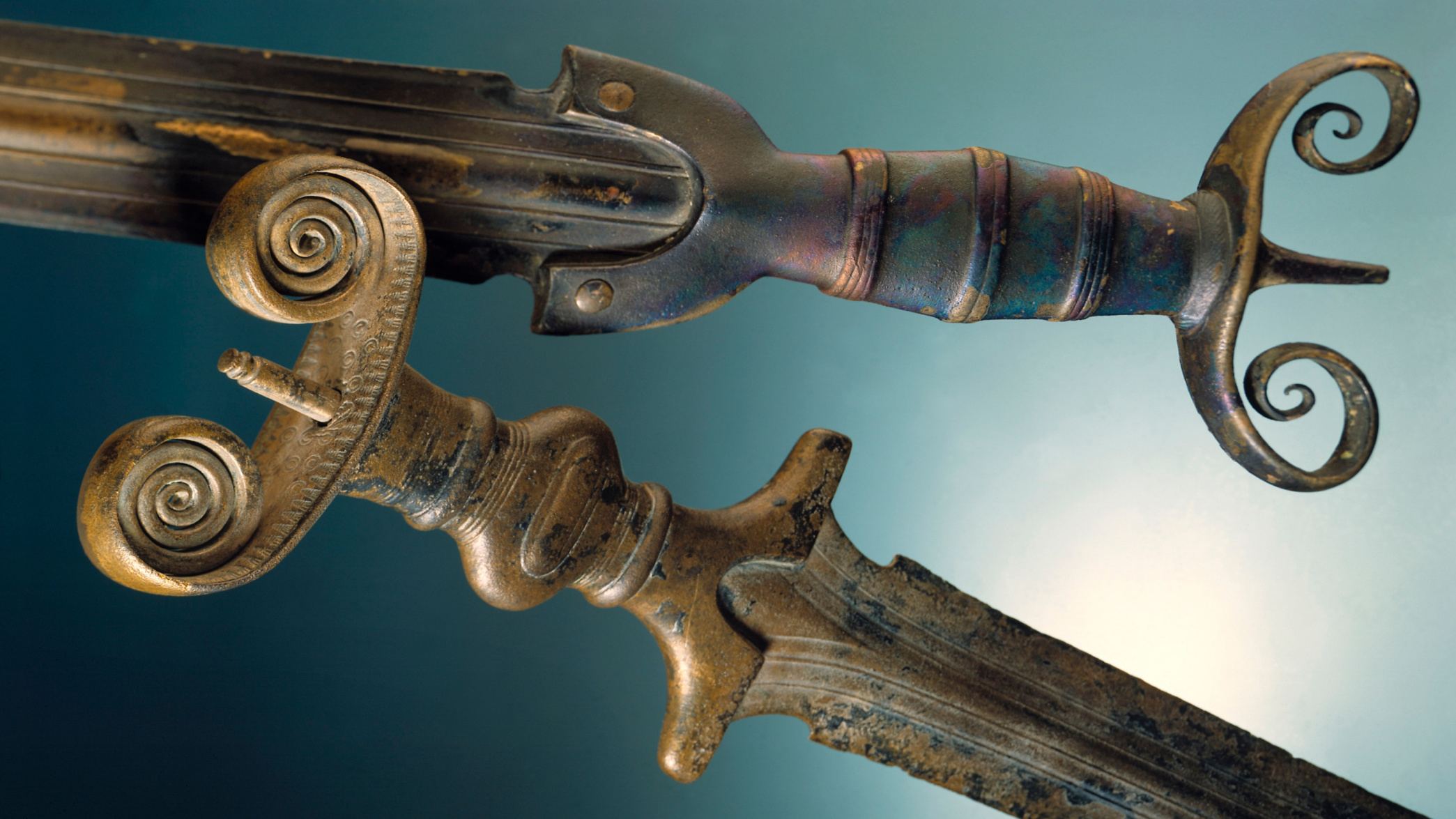Most people are surprised to learn that iron objects actually date back to the Bronze Age. But what’s even more fascinating is that some of these ancient iron objects were made from meteorites. That’s right, meteorites! In fact, the use of meteoric iron is not just a myth, but a proven reality. This is an astonishing discovery that tells us a lot about the ingenuity of ancient people and their knowledge of the world around them. So, what’s the fascinating history behind bronze age artifacts made from meteoric iron?

Though meteorites had already been recognized as one source of this metal, the scientific community couldn’t determine whether they accounted for most or simply a few Bronze Age iron artifacts. Albert Jambon, as part of his work at the Institut de minéralogie, de physique des matériaux et de cosmochimie (CNRS / UPMC / IRD / Muséum national d’Histoire naturelle), has demonstrated that iron used during the Bronze Age is always meteoric and he explained how this practice was abandoned during the Iron Age.
The Iron Age began in Anatolia and the Caucasus around 1200 BCE. But nearly 2,000 years earlier, various cultures were already fashioning objects out of iron. These items were extremely rare and always greatly treasured.
Iron ore abounds on the Earth’s surface. So what made these artifacts so valuable? Initial research had shown that some were made with iron from meteorites, which led scientists to wonder how many others were. Albert Jambon gathered the available data and conducted his own nondestructive chemical analyses of samples using a portable X-ray fluorescence spectrometer.
His collection of iron artifacts includes beads from Gerzeh (Egypt, c. 3200 BCE); a dagger from Alaca Höyük (Turkey, c. 2500 BCE); a pendant from Umm el-Marra (Syria, c. 2300 BCE); an axe from Ugarit (Syria, c. 1400 BCE) and several others from the Shang dynasty civilization (China, c. 1400 BCE); and the dagger, bracelet, and headrest of Tutankhamen (Egypt, c. 1350 BCE).

His analyses revealed that each of these Bronze Age artifacts was made with meteoric iron. When large celestial bodies like our planet are forming, nearly all nickel drifts towards the molten iron core. Thus, it is extremely rare to find nickel on the surface. However, some meteorites are created when celestial bodies are shattered. If these meteorites are composed of core material, they mostly contain iron with high levels of nickel and cobalt.
This characteristic makes it possible to identify the source of iron. Meteoric iron is also already in a metal state, ready for use, which explains why it went into all Bronze Age iron artifacts. In contrast, the iron compounds in terrestrial ores must first undergo the process of reduction, which removes bound oxygen to yield the desired metal. This is the basis of smelting in furnaces, a breakthrough that marked the beginning of the Iron Age.

In conclusion, the use of rare extraterrestrial metal during a time when terrestrial iron ores were abundant and easier to procure is a significant discovery. Albert Jambon’s findings have challenged previously held theories proposing that nickel-laden iron alloys were obtained from terrestrial ores. The discovery of the Bronze Age artifacts and the analysis conducted on them provide valuable insights into the development of metalworking technology that has been used for thousands of years. This discovery demonstrates how science and technology can continue to uncover new knowledge about the past, and open new doors to understanding the mysteries of our history.



